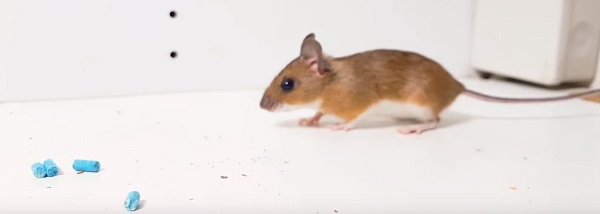If you are plagued by a mouse infestation, you are probably ready to try anything to get rid of the vermin. Did
you start by trying the “guaranteed” DIY remedies or machines that say they will keep mice away, only to disappoint
you? Now you have scores of them living and breeding in your attic and walls. Have you been told about those ‘good
‘ole’ remedies like hanging foil pie pans from rafters or blasting bright lights? Two of the more popular “natural”
repellents that many swear by are moth balls and ammonia. They do not work to rid your home of mice or any other rodent.
Using chemicals such as these in an inappropriate manner is highly dangerous! Moth balls are comprised of a cocktail of
toxic chemicals specially designed to kill bugs (moths). The main chemicals found in mothballs are naphthalene or
paradichlorobenzene. These chemicals turn in to a toxic gas when exposed to the open air. This toxic property and
gaseous state is enhanced if the air is hot. Both of These gases are known to be irritants to soft tissues such as
your eyes, nose, and mouth.

It can cause serious problems if it comes in contact with your lungs, skin, or mucous membranes. Physical manifestations include
extreme headaches, nausea, and dizziness. Lingering exposure to these substances can lead to conditions such as hemolytic anemia.
This dangerous condition causes the impairment or destruction of red blood cells in your body. Other studies show that these same
gases can negatively alter DNA in children and is known to cause cancer. Ammonia, best known as a cleaning agent, has a pungent odor
that is supposed to ward off rodents. Unfortunately, prolonged exposure to ammonia fumes is known to cause serious burning of the soft
tissue in the eyes, nose, and throat. It severe irritation of your upper respiratory tract and difficulty breathing are other side effects.
Besides wrecking havoc with your respiratory tract extended exposure can result in even more serious conditions including blindness, permanent
damage to your lungs, respiratory distress or even death. These chemicals are not something you want to misuse around your family, or
animals.
Even if this combination of chemicals didn’t have such potentially deadly results, the smell created by either of them when they get hot is
enough to make your house unbearable for quite some time. This odor is likely to seep into your furnishings, curtains, carpets, and yes, even
your clothes. If you are suffering with a mouse infestation that you feel merits such drastic measures as handling dangerous chemicals and possible
poisoning, consult a professional animal removal service and let them handle it. They are trained to get rid of your mouse problem quickly and with
very little muss or fuss. They will accomplish this at no danger to you, your family, or home. Don’t take chances with risky DIY remedies that are
not worth wasting the money, or taking the risk to use them.
Go back to the
How to get rid of mice in the attic home page. You might also want to read about
how to kill mice and why the use
of snap traps is better than
mouse poison. Read an analysis of the different types of traps and how to use them on the
how to trap mice page.
Learn why
bait is not as important as trap type, placement and location. Also read a full analysis of
mouse repellent to understand why it
never works. If you see droppings and want to identify them, read the
mouse poop page. If you need to hire professional help, read about
how much does mouse removal cost?
or you can read this site to learn how to do it yourself. Feel free to email me about Do mothballs or ammonia help repel mice?